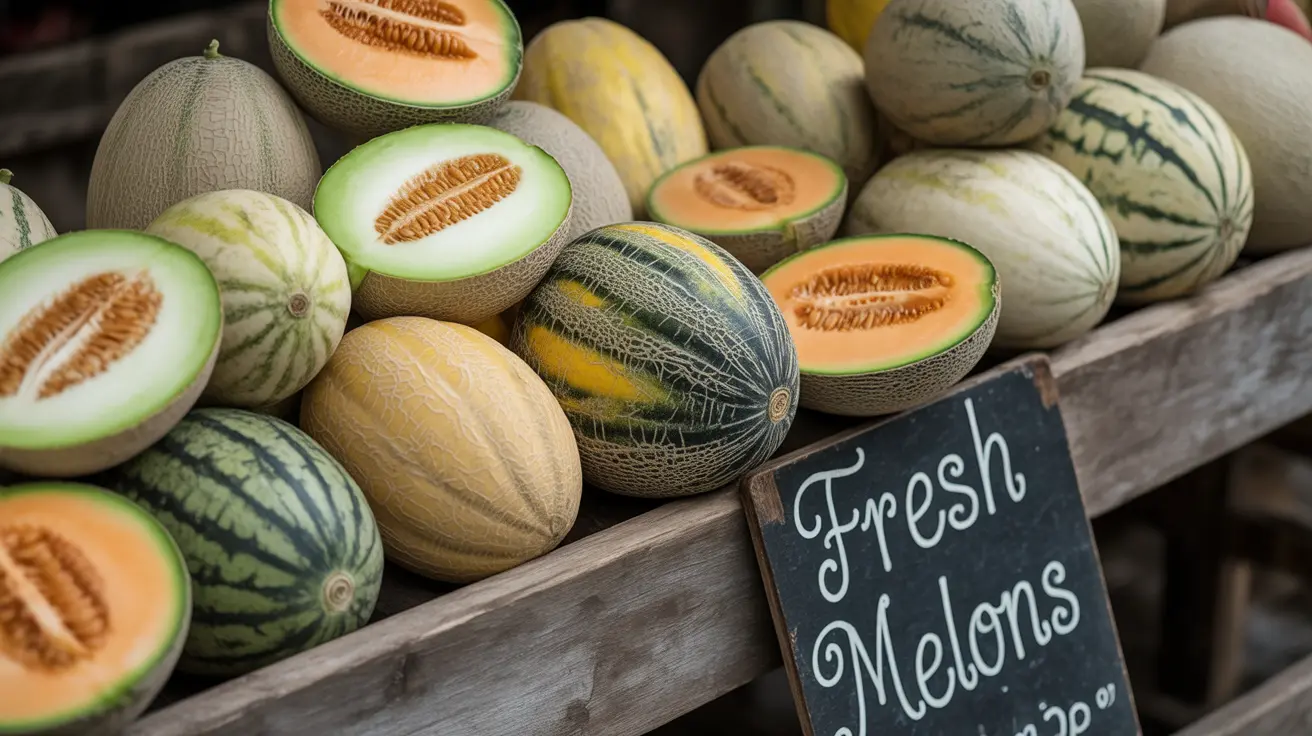Many people use the terms muskmelon and cantaloupe interchangeably, but there are actually distinct differences between these sweet, refreshing fruits. Understanding these differences can help you make informed choices at the grocery store and maximize the specific health benefits each variety offers.
In this comprehensive guide, we'll explore the unique characteristics of muskmelons and cantaloupes, their nutritional profiles, and how to identify them. We'll also delve into their respective health benefits and ways to incorporate them into your diet.
Understanding Muskmelon and Cantaloupe Classifications
Contrary to popular belief, cantaloupe is actually a variety of muskmelon. All cantaloupes are muskmelons, but not all muskmelons are cantaloupes. Muskmelons (Cucumis melo) belong to the Cucurbitaceae family, which includes various melon varieties with distinct characteristics.
Physical Characteristics and Identification
External Appearance
Cantaloupes typically have a distinctive netted or reticulated rind pattern with a grayish-brown color. True North American cantaloupes feature deep grooves or sectors on their surface. Other muskmelon varieties may have smoother rinds or different netting patterns, and their colors can range from pale green to yellow.
Internal Features
The flesh of cantaloupes is typically salmon-pink to orange in color, while other muskmelon varieties might have green, white, or lighter orange flesh. Both fruits have a central cavity containing seeds, but the texture and sweetness levels can vary between varieties.
Nutritional Comparison
Both muskmelons and cantaloupes are excellent sources of essential nutrients, though their specific nutritional profiles can differ slightly:
- Beta-carotene and Vitamin A: Particularly high in cantaloupe
- Vitamin C: Abundant in both varieties
- Potassium: Present in significant amounts in both types
- Dietary fiber: Similar levels in both fruits
- Water content: Both are approximately 90% water
Health Benefits and Uses
These melons offer numerous health advantages that make them valuable additions to a balanced diet:
- Hydration support
- Immune system enhancement
- Anti-inflammatory properties
- Eye health promotion
- Digestive health support
Selection and Storage Tips
When selecting either type of melon, look for fruits that feel heavy for their size and have a sweet, fragrant aroma at the blossom end. Avoid melons with soft spots, bruises, or excessive softness at the stem end.
Frequently Asked Questions
What is the difference between muskmelon and cantaloupe in terms of appearance and taste?
Cantaloupes typically have a netted, grayish-brown rind with deep grooves and orange flesh, while other muskmelon varieties may have smoother rinds and flesh ranging from green to white to orange. Cantaloupes generally have a sweeter, more concentrated flavor compared to other muskmelon varieties.
How do the nutritional values of muskmelon and cantaloupe compare, especially vitamins A and C?
Both fruits are excellent sources of vitamins A and C, though cantaloupes typically contain higher levels of beta-carotene (vitamin A precursor). Both varieties provide similar amounts of vitamin C, potassium, and dietary fiber.
What are the health benefits of eating cantaloupe versus other muskmelon varieties?
While both types offer similar health benefits, cantaloupes generally contain higher levels of beta-carotene, making them particularly beneficial for eye health and immune function. All varieties provide excellent hydration, antioxidant support, and digestive benefits.
Can muskmelon or cantaloupe help with hydration and immune support?
Yes, both fruits are approximately 90% water and rich in immune-supporting nutrients like vitamins A and C. Their high water content and electrolyte composition make them excellent choices for hydration, especially during warm weather.
How can I tell if a melon is a cantaloupe or another type of muskmelon at the store?
Look for the characteristic netted, grayish-brown rind with deep grooves to identify a cantaloupe. Other muskmelon varieties may have smoother rinds or different coloring. A ripe melon should feel heavy for its size and have a sweet aroma at the blossom end.




